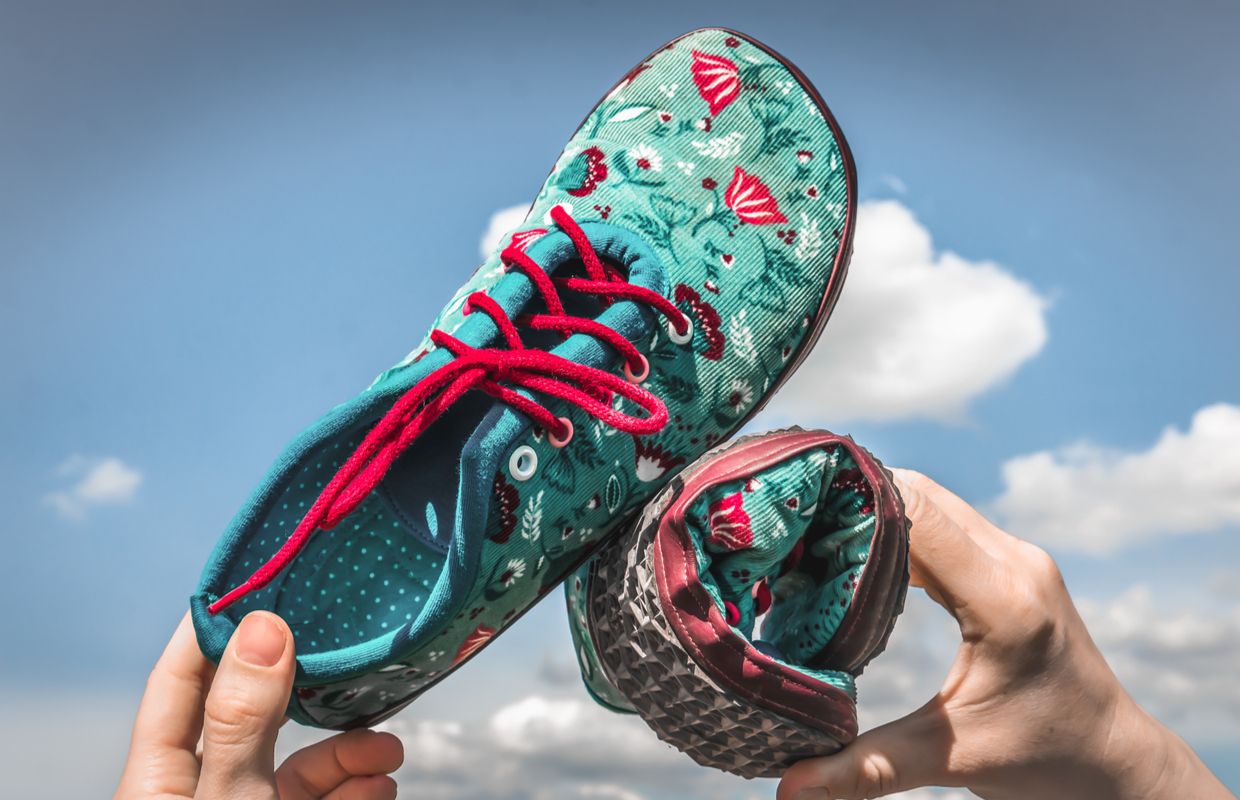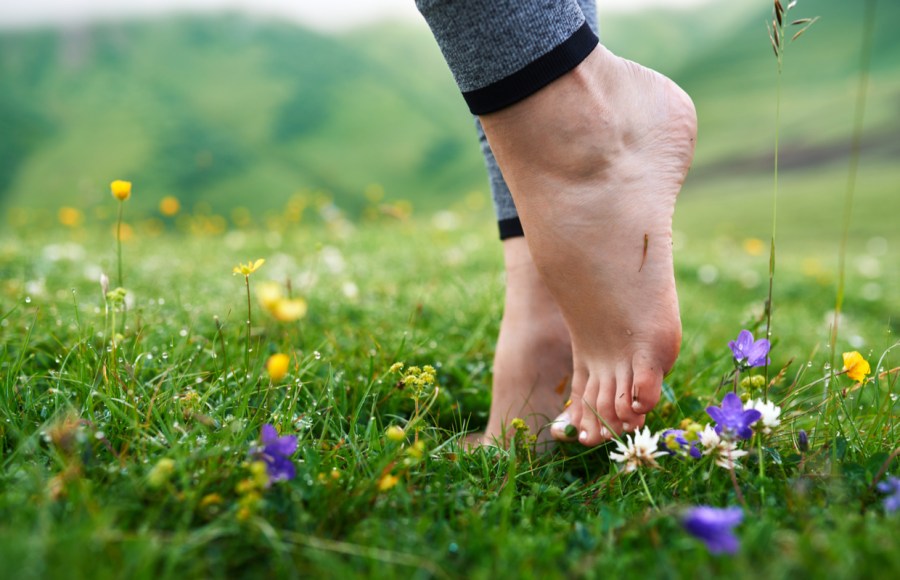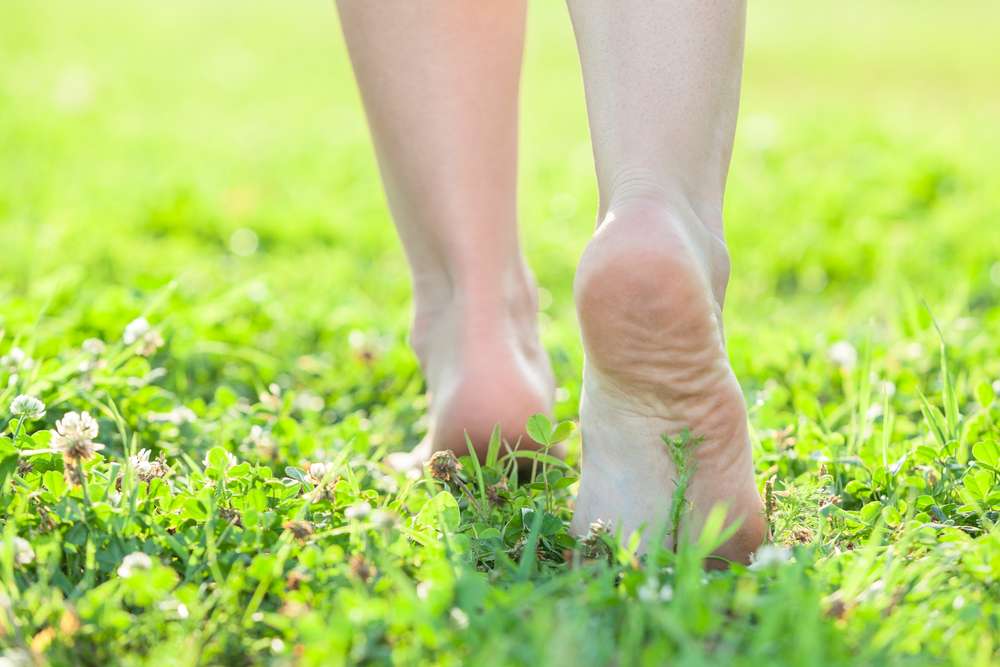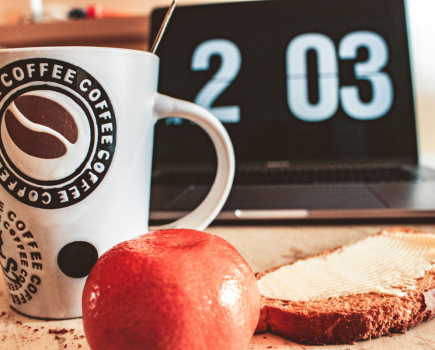Many of us are well aware of the huge range of benefits walking offers for your health and wellbeing. However, did you know that walking barefoot could add even more pros to the list? Free your feet and find out how you can reap a plethora of health benefits simply walking barefoot this summer…
Humans have been walking the earth for millions of years and, until relatively recently in the great scheme of things, we did so mostly barefoot or in very simple, modest footwear. It seems our ancestors knew a thing or two about the health benefits of walking barefoot.
Indeed, research from Harvard University has shown that when we walk without shoes we actually move differently – in harmony with and sympathetically to our environment. This can often mean far less chance of injury and, surprisingly, better protection for our feet and whole body. Think of your feet like the foundations of a house – get that right and the whole structure will stand strong!
Are shoes bad for your feet?
A normal human foot is wider at the toes and narrower at the heel,’ explains natural life-stylist, Tony Riddle. ‘But many modern shoe designs are completely the opposite. That means your feet are squashed into shoes that change their shape, or they’ve got thick soles that shut off receptors, so can result in a less natural walk and cause problems to occur further up your body, such as tight hamstrings, lazy glutes and a weak core.’

What are barefoot shoes?
But don’t worry, there’s no need to kick off your heels in the middle of a restaurant or ditch your slip-ons in the supermarket. What you can do is embrace the barefoot ethos as much as possible in and around your home and garden – and now is the perfect time to do it as the weather improves.
Spending more time barefoot and even switching to so called ‘barefoot shoes’ such as the Vibram Fivefingers V-Soul (£73.80) or any shoes from the Vivobarefoot range for some of your daily activities can help you free your feet and trade those niggles for a lean, defined physique and a stronger, healthier posture, just as nature intended! The biomechanics benefits.
‘I’m barefoot as much as possible,’ says Anna. ‘I’m nearly always barefoot in my house or around the garden. I recognise that it’s certainly not the social norm to be barefoot in all situations, but it’s good to do it as much as possible,’ explains Anna.
‘Your feet are incredibly sensitive and they are equipped with a complex array of nerves to relay signals back to your brain, but in shoes we dull this feedback. If you begin to spend time in bare feet, you’ll notice how your balance and your proprioception improve.’
3 health benefits of walking barefoot
1. Barefoot walking triggers natural reflexology
‘Psychologically, it feels incredible to experience the earth beneath your feet,’ says fitness expert Anna Toombs (trbalance.com). ‘Ask anyone what they do when they arrive on a sandy beach and they can’t wait to remove their shoes and feel the sand between their toes.
‘The feel of different textures and temperatures adds to any experience. Just as a walk in the countryside can be better than trudging around a concrete city on a grey day, it’s much more fun to feel mud, grass and gravel under your feet than the monotonous inside of a shoe!’
2. Barefoot walking helps to ground you
Barefoot walking gives you a direct connection with the earth and this element of grounding can have a healing effect on your body. There’s an increasing amount of research being carried out in this area, and martial artists and yogis have recognised the importance of that connection for thousands of years.
‘By simply removing your shoes and touching base with the earth you can start to reconnect and rewire pathways in your brain that have been dormant since you started wearing shoes as a baby,’ says Tony.
3. Walking with bare feet strengthens your feet
Your feet contain a staggering 200,000 exteroceptors – or highly-tuned sensors – located in the soles to help you tune in to the world around you. ‘Your feet have the ability to mould, grip, grab and switch from compliance and softness to tension and stiffness in
a millisecond,’ explains Tony.
‘Terrain information from the exteroceptors in your feet is used to adjust your joints, core and other muscles and tendons as well as alter your posture to protect against injury. All the while your brain makes subtle micro-adjustments to the shapes you make over varying terrain, not only to minimise the risk of injury, but also to maximise the efficiency of your movement.’








